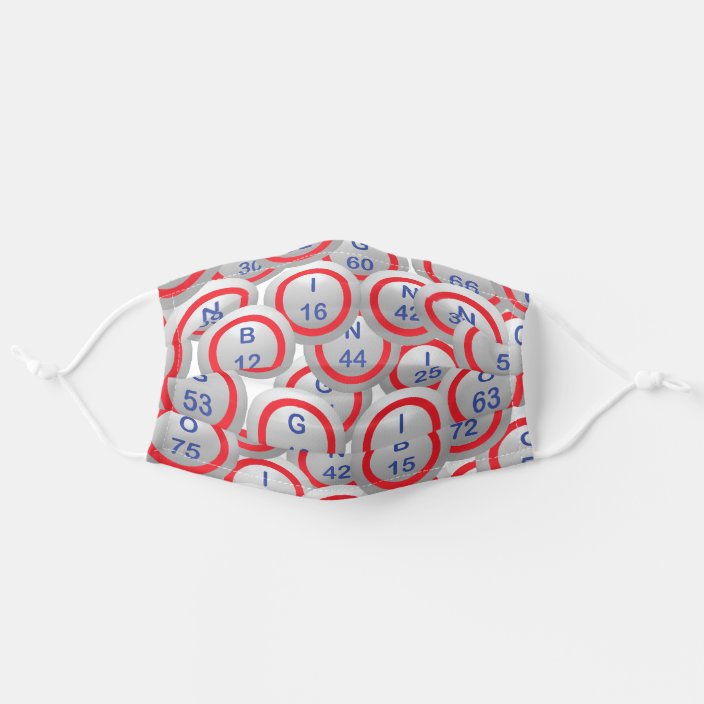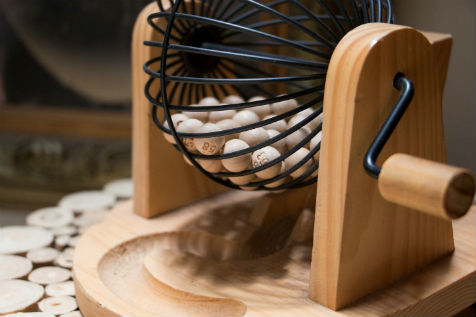Homemade Bingo Balls
Squishy Cutting Bingo! Huge Homemade Stress Ball! If playback doesn't begin shortly, try restarting your device. Videos you watch may be added to the TV's watch history. Bingo Calculator. How to estimate and modify the odds of a bingo game. The Bingo Calculator allows you to link together all the parameters that can influence the odds of the players to get a bingo during a game. You can change the number of balls in the bingo caller in order to.
Give your tree a bingo twist this year!
Normally, we tend to keep Christmas decorations for years and years and years—but if you’re feeling like mixing things up a little bit this December, then why not trim your tree a little differently by combining two great loves—baubles and bingo?!
These bingo ball baubles are dead easy and fun to make. We’ve deliberately used materials you may have in stock (if not, they’re all easy to find on eBay or in your local craft store), so you can keep the baubles as cheap and cheerful as you like.
So, invite the girls over, stick on the festive tunes, enjoy a good old Christmas craft session… and don’t forget to send us pictures when you’re done!
You will need:

- Polystyrene ball (7cm diameter)
- String or ribbon of your choice (20cm)
- Buttons:
- Black (small; 25)
- White (small; 50)
- Colour(s) of your choice (mixed or small; 100)
- Pearl-headed pins:
- Black (optional, as you may wish to use your coloured pins with the black buttons; 25)
- White (50)
- Colour(s) of your choice (150-200)
(All sizes and quantities are recommendations only. Feel free to go as big or small as you like!)
Step 1
Choose your bingo ball number and colour.
Pick one bright colour for a solid bingo ball effect, or go crazy for a multicoloured bauble! Choose your number based on the size of your ball and buttons. Perhaps you have a number that always brings you bingo luck? Or, if you want to make things really easy, pick a number with straight sides, like 4 or 11.
Step 2
Stick black or coloured pins through the black buttons to form the number of your choice.
This will become the front of your bauble. We chose to make the number 3 (because real numbers have curves).
Step 3
Use the small coloured buttons to form a circle around the number.
Circles are difficult to map out neatly, but the great thing with pins are that, if you go wrong at all, you can always take them out and start again! And anyway, we love the homemade look – perfection is overrated!

Step 4
Leave a small gap around the coloured ring, to form a white ring, then pin your coloured buttons over the rest of the bauble.
You can always overlap buttons to stop any white space remaining.
Step 5
Pin your white buttons in the remaining space.
Using white pearl-headed pins will give the best overall effect. When you’re done, you should have white buttons both between the number and coloured ring, and between your coloured ring and the rest of the coloured buttons.
Nearly finished–all that remains is to fasten on your ribbon or string!
Step 6
Fold the ribbon back on itself. Fasten at the top (above the number) by sticking a pin through a coloured button, then through the 2 loose ends of your ribbon, and finally through the bauble.
Doesn’t it look pretty?
Top Tip: Secure the ribbon with other pins (through the same button if possible), or glue it in place for extra security.
Tah-dahh! That’s your first bingo ball bauble fully complete!
P.S. These also make great Christmas presents! Give these baubles as a present on their own, or combine them with other bingo goodies for the ultimate bingo-lover’s gift.
Looking to make a tree-ful? Choose a different colour and number and work through the instructions again, or try out any of these other bingo twists!
Alternative Bingo Bauble Ideas
- Forget buttons – simply use different coloured pins! This will take a little longer, and you’ll need a lot of pins, but it will be equally effective.
- Messy but fun: carefully paint your number in PVA glue onto the ball. Sprinkle glitter onto the glue and leave to dry. Paint the ring and the remaining ball with glue, and pour your coloured glitter on top. When it’s dry, the bauble should twinkle like Santa Claus’ eyes!
Have you enjoyed your 2016 BingoPort experience? We want to know your thoughts in our epic Big BingoPort Player survey – check it out here!
How to estimate and modify the odds of a bingo game
Homemade Bingo Balls Fun
The Bingo Calculator allows you to link together all the parameters that can influence the odds of the players to get a bingo during a game. You can change the number of balls in the bingo caller in order to obtain the game outcome you would want. Per example, you can change those odds depending on how many cards/players you have in the game, how many prizes you give, and how long you want the game to last longer.
File name: 201018-bingomaker-bingo-calculator.xlsx
Size: 154 KB
How does it work?
When you create a New Game, in the card settings, you can choose the number of random values in your bingo. By default, the number of values is 75, because the most popular bingo game is with numbers from 1 to 75. You’ll be able to choose from 25 to 150 random values in the settings.
The numbers in the table were found by calculating an average of all the results for each parameter. The number of winners indicated in the graph represents the average number of bingo lines (5 consecutive squares) obtained among all the cards of a game.
Keep in mind that this tool is giving you average results and you can end up with slightly higher or lower numbers than the result you will get in the bingo card simulator.
The only parameter you need to set when you use the bingo calculator is the number of cards in the game. The statistics on the table will update themselves automatically. You can start analyzing the results to find which number of values you need to select during your project creation.
Parameters that can influence the calculator:

Homemade Bingo Balls Bar
Number of total random values of your bingo and number of values drawn during the game
When you create a bingo project, you set how many total values will be in the bingo card squares. The relation between the number of total values and the number of winners can be seen in the bingo calculator for 25 to 100 total values. If the number of values is high, you’ll need to play many values in order to get some winning lines (get a bingo). If this number is low, you’ll need to play fewer values to get winning lines. As you can see in the example below, you can plan to get about 25 winning lines by modifying the number of total values on the cards.
Example 1:
If you play a game with 50 total values in your bingo and you have 100 players (100 cards), you will need to play about 24 random values to get an average of 25 winning lines.
If you play a standard bingo game (numbers from 1 to 75) and you have 100 players (100 cards), you will need to play about 35 random values to get an average of 25 winning lines.
If you play a game with 90 total values in your bingo and you have 100 players (100 cards), you will need to play about 40 random values to get an average of 25 winning lines.
Number of cards
This relation describes the link between the number of cards and the number of values to be drawn to get a certain number of winners. If you have many cards, you will likely get a lot of winning lines after you draw a small number of values. If you have fewer cards, you will likely need to draw more numbers to get the same number of winning lines as the probabilities are lower for a player to get a bingo.
Example 2:
If you play a standard bingo game (numbers from 1 to 75) and you have 25 players (25 cards), and if you play 30 random values, you will get an average of 3 winning lines.
When you have more cards, you will likely get more winners. If you play a standard bingo game (numbers from 1 to 75) and you have 100 players (100 cards), and if you play 30 random values, you will get an average of 13 winning lines.
Number of winning lines
Depending on the number of players, the number of total values in the bingo and the number of values drawn during the bingo, you can adjust the number of winners. All you need to do is to set these parameters accordingly.
Example 3:
Let’s say that I organize a bingo for 100 players (1 card each, so 100 cards), and I would like to have about 20 winning lines. I have 20 prizes to distribute among the winners. In order to make that scenario possible, I need to adjust the number of total values in the bingo and the number of values drawn during the bingo. Here are some possible scenarios to do so:

Homemade Bingo Balls Clipart

- Scenario 1: Draws: 23 / Random values: 50 / Number of winning lines: 20
- Scenario 2: Draws: 34 / Random values: 75 / Number of winning lines: 20
- Scenario 3: Draws: 42 / Random values: 95 / Number of winning lines: 20
How To Make Bingo Balls
I can technically pick any of those three scenarios because they all give me the same approximate number of winners (20 winning lines). Because most of the players are used to playing standard bingo (numbers from 1 to 75), I’m going to use the 2nd scenario. I have to set the number of values during the creation of my bingo project to 75, and draw about 34 random values during the game in order to get about 20 winners among the 100 players.